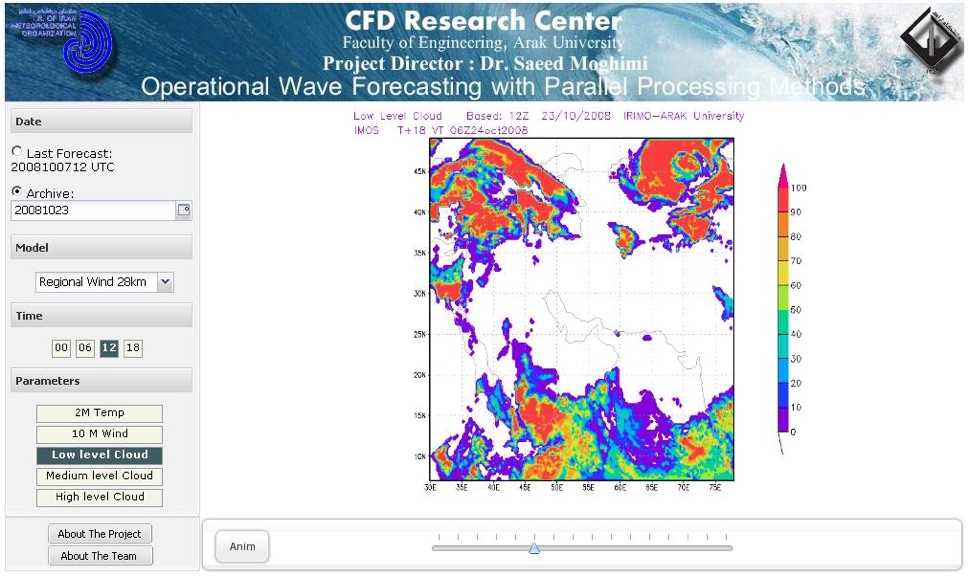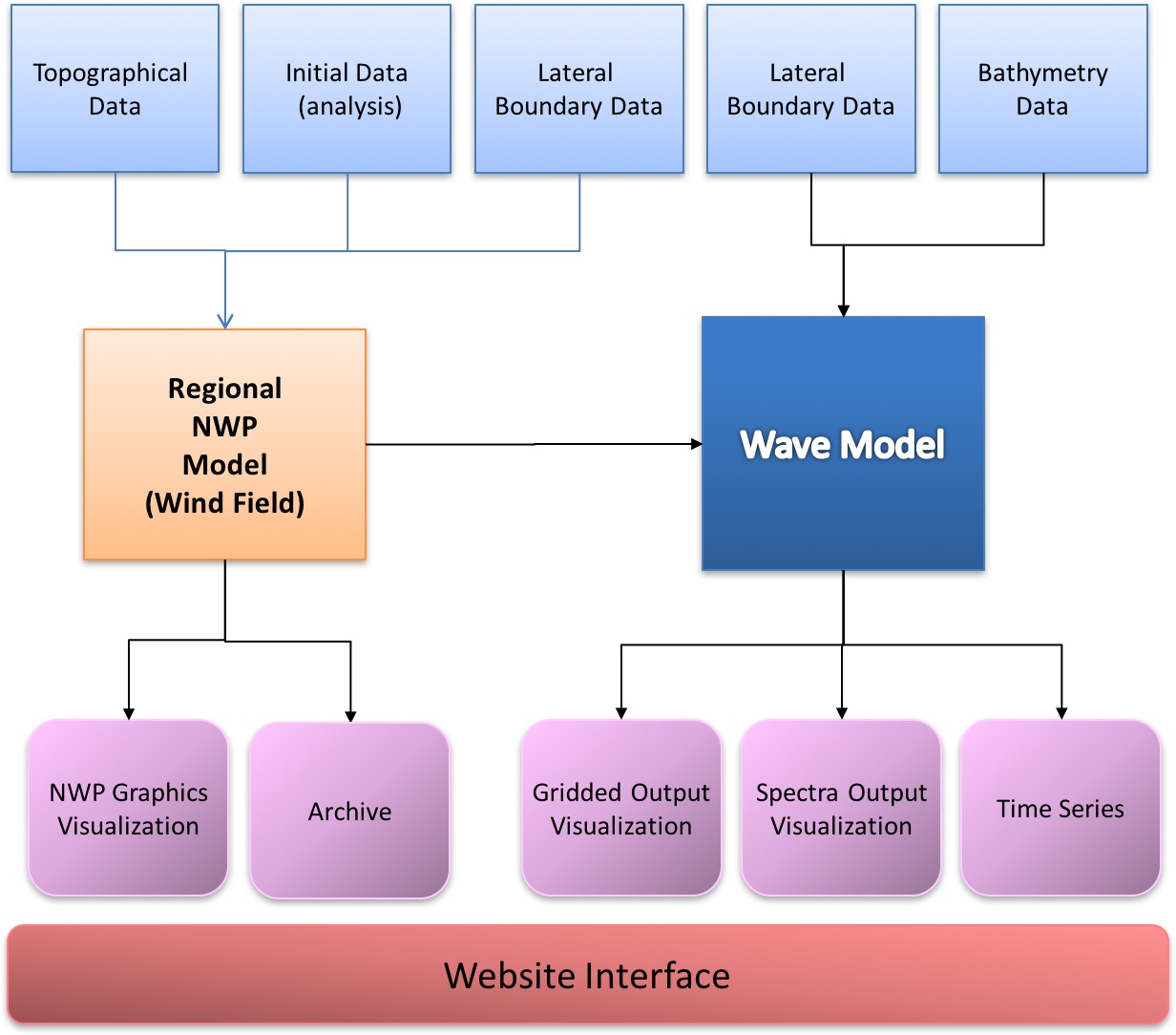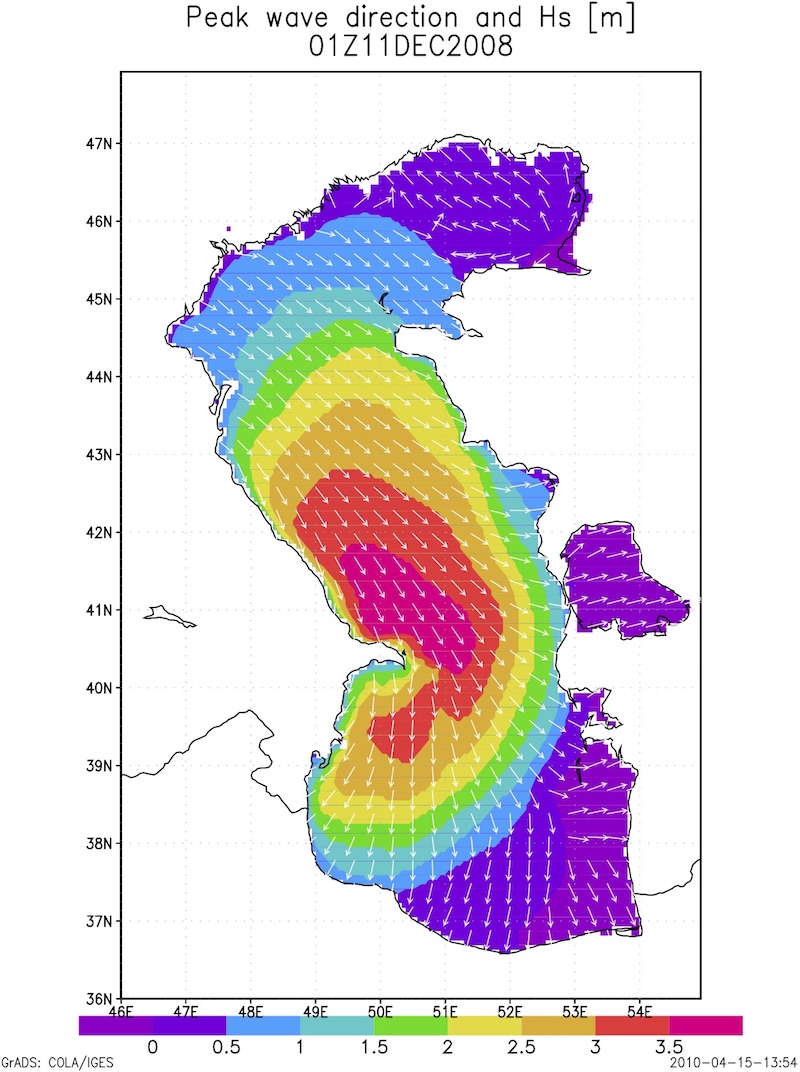Introduction
This project was part of a forecasting system for marine meteorology developed by our team and called the Iranian Met-Ocean System (IMOS). The first phase of this project involved developing a wind and wave forecasting system for the Caspian Sea, located in north of Iran. The idea was to build a fully-integrated environment including meteorological, wave and circulation models with all pre- and post-processing programs and modules together in one package.
Several parts of this project, including building the main pipeline and scheduling system, the parallel processing cluster, the wave visualization system, and the web-based reporting tool were the subject of my BSc final project at the University of Arak, advised by Dr. Saeed Moghimi. The project was set up and became operational at the Irainian Meteorological Organization.
Meteorological Model
The HRM (High resolution Regional Model) model, developed by the German Weather Service (DWD) is used as the meteorological component of the system. HRM receives its boundary conditions in research mode from DWD for a domain within 7° N to 52°N and 30°E to 80°E. The Wave Model WAM 4.5.1, developed by the GKSS Research Center, parallelized using the Message Passing Interface (MPI) by our team is used as the wave forecasting component. The WAM model receives wind field forecasts provided by HRM and produces spectra and time series forecasts of wave parameters for selected points, as well as gridded output of integrated parameters such as significant wave height and wave period.

Forecast Pipeline
All of the components are controlled by a central manipulation engine, which is developed based on “scheduler” package of DWD. The System is developed by Korn Shell scripts and takes advantage of different Linux/Unix utilities such as sed/awk/cron. Most of the file conversions is performed by programs written in Fortran. The system is activated as soon as the transmission of the input boundary files from DWD starts. It parses the input data, generates proper configuration files, and starts the HRM, followed by the WAM. The system does the archiving and clean-up operations as well as all of the post processing and files conversions.

Post-Processing and Visualization
Post processing of HRM outputs are done by Grads4Web package. For the wave outputs, the WAM-VIS package is developed as a part of the project. WAM-VIS generates gridded, as well as 1D and 2D spectrum outputs for the requested time and geographical locations. An interactive website for publishing of forecast products is designed and developed to present all of the model outputs on a real-time basis and the user can access both the latest and the archived forecasts for different models.

Publications
Saeed Moghimi, Omid Alemi , Behrooz Dalvandi. Meteo-Ocean Forecasting System. Continents under Climate Change. CLIMA2010, Humboldt University, Berlin, Germany. PDF
Saeed Moghimi, Hameed Reza Qaienee and Omid Alemi. Developing Wave Forecasting Model for Caspian Sea Using Parallel Processing Technology. International Workshop on Integrated Coastal Zone Management, Izmir-Turkey, 20-22 October 2009. PDF